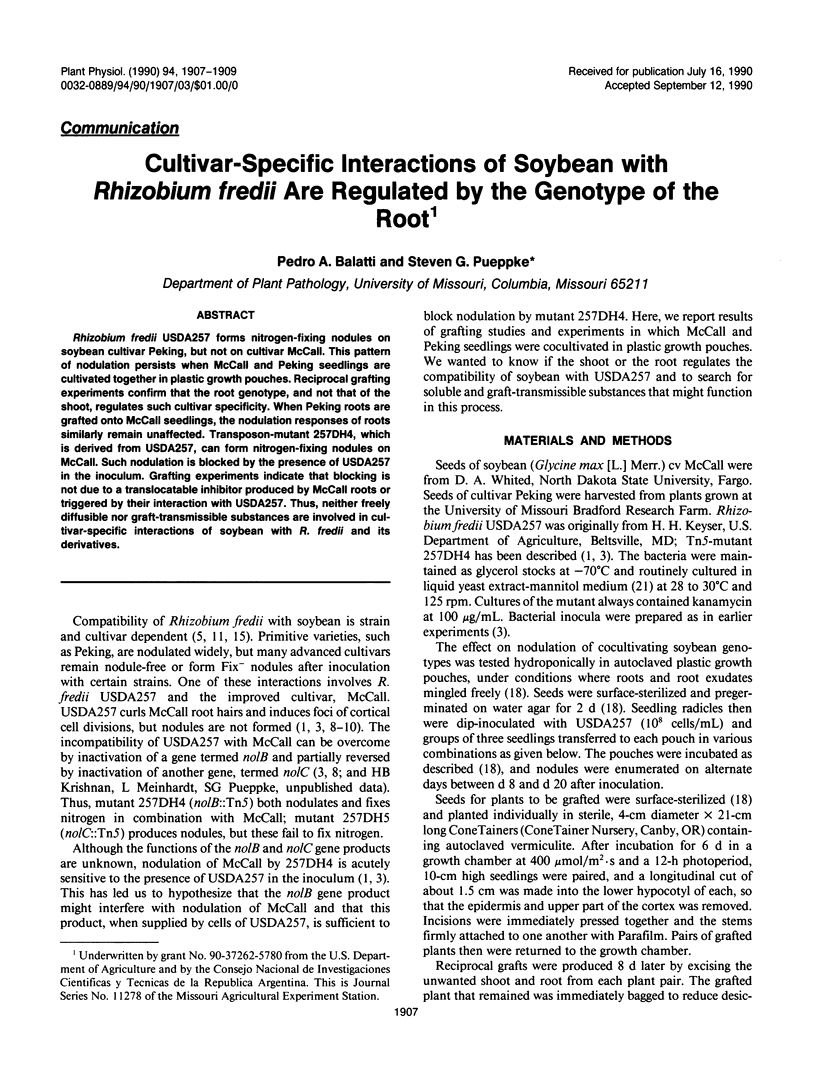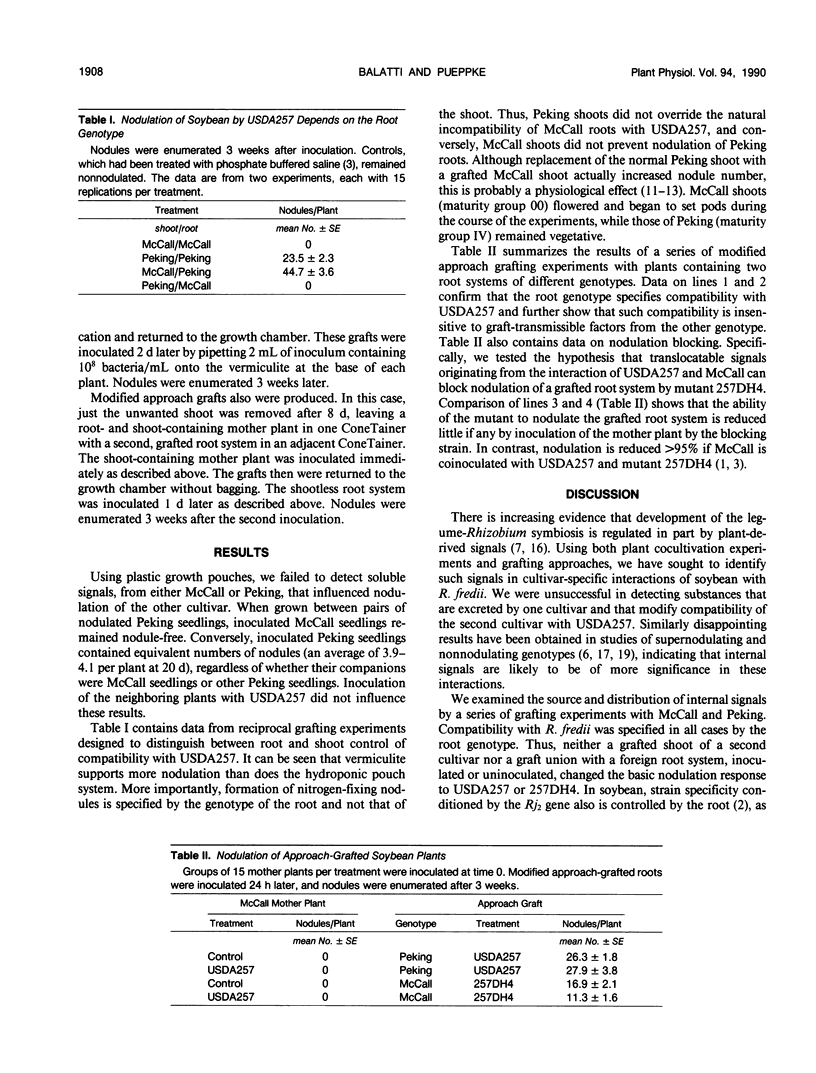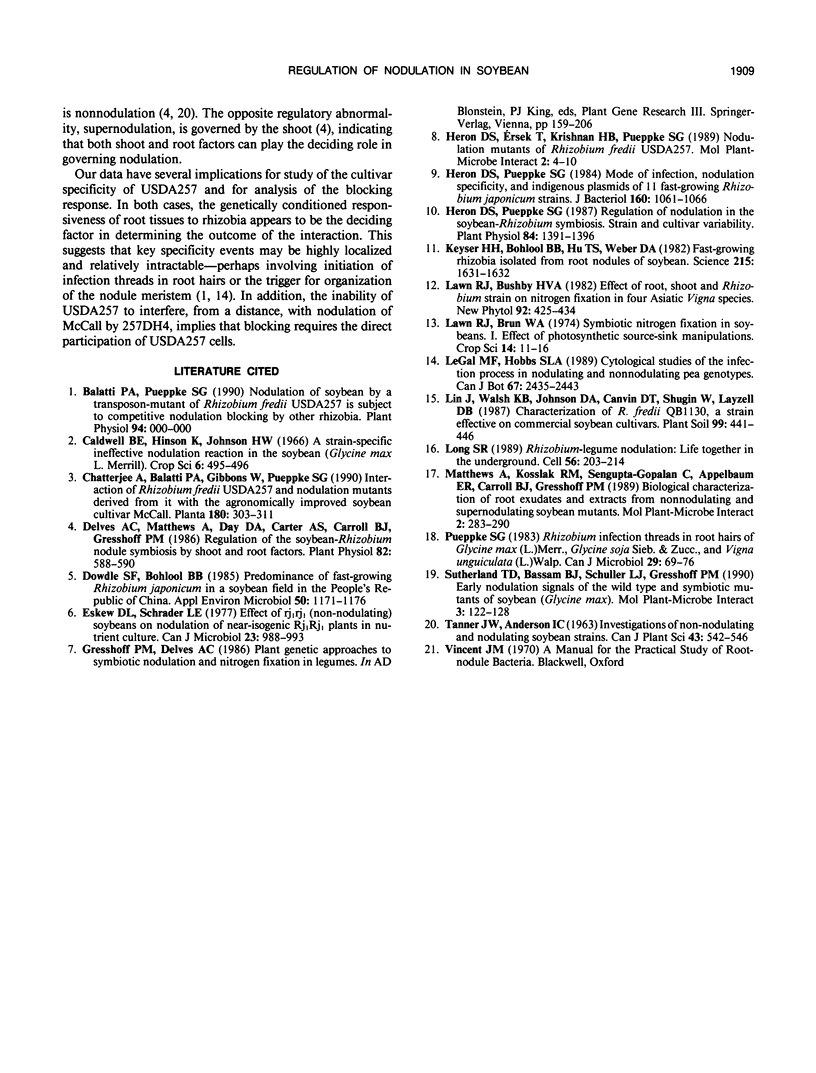Abstract
Rhizobium fredii USDA257 forms nitrogen-fixing nodules on soybean cultivar Peking, but not on cultivar McCall. This pattern of nodulation persists when McCall and Peking seedlings are cultivated together in plastic growth pouches. Reciprocal grafting experiments confirm that the root genotype, and not that of the shoot, regulates such cultivar specificity. When Peking roots are grafted onto McCall seedlings, the nodulation responses of roots similarly remain unaffected. Transposon-mutant 257DH4, which is derived from USDA257, can form nitrogen-fixing nodules on McCall. Such nodulation is blocked by the presence of USDA257 in the inoculum. Grafting experiments indicate that blocking is not due to a translocatable inhibitor produced by McCall roots or triggered by their interaction with USDA257. Thus, neither freely diffusible nor graft-transmissible substances are involved in cultivar-specific interactions of soybean with R. fredii and its derivatives.
Full text
PDF


Selected References
These references are in PubMed. This may not be the complete list of references from this article.
- Delves A. C., Mathews A., Day D. A., Carter A. S., Carroll B. J., Gresshoff P. M. Regulation of the soybean-Rhizobium nodule symbiosis by shoot and root factors. Plant Physiol. 1986 Oct;82(2):588–590. doi: 10.1104/pp.82.2.588. [DOI] [PMC free article] [PubMed] [Google Scholar]
- Dowdle S. F., Bohlool B. B. Predominance of Fast-Growing Rhizobium japonicum in a Soybean Field in the People's Republic of China. Appl Environ Microbiol. 1985 Nov;50(5):1171–1176. doi: 10.1128/aem.50.5.1171-1176.1985. [DOI] [PMC free article] [PubMed] [Google Scholar]
- Eskew D. L., Schrader L. E. Effect of rj1rj1 (non-nodulating) soybeans on nodulation of near isogenic Rj1Rj1 plants in nutrient culture. Can J Microbiol. 1977 Aug;23(8):988–993. doi: 10.1139/m77-147. [DOI] [PubMed] [Google Scholar]
- Heron D. S., Pueppke S. G. Mode of infection, nodulation specificity, and indigenous plasmids of 11 fast-growing Rhizobium japonicum strains. J Bacteriol. 1984 Dec;160(3):1061–1066. doi: 10.1128/jb.160.3.1061-1066.1984. [DOI] [PMC free article] [PubMed] [Google Scholar]
- Heron D. S., Pueppke S. G. Regulation of nodulation in the soybean-Rhizobium symbiosis : strain and cultivar variability. Plant Physiol. 1987 Aug;84(4):1391–1396. doi: 10.1104/pp.84.4.1391. [DOI] [PMC free article] [PubMed] [Google Scholar]
- Keyser H. H., Bohlool B. B., Hu T. S., Weber D. F. Fast-growing rhizobia isolated from root nodules of soybean. Science. 1982 Mar 26;215(4540):1631–1632. doi: 10.1126/science.215.4540.1631. [DOI] [PubMed] [Google Scholar]
- Long S. R. Rhizobium-legume nodulation: life together in the underground. Cell. 1989 Jan 27;56(2):203–214. doi: 10.1016/0092-8674(89)90893-3. [DOI] [PubMed] [Google Scholar]


